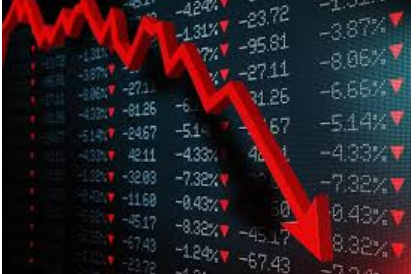Ukraine-krigen dominerer nyhederne, men Morgan Stanley tror, at markederne bliver præget mere af de underliggende tendenser i økonomien og virksomhedernes indtjening. Der er en voksende risiko for den økonomiske vækst og for indtjeningen. Forbruget er slet ikke så positivt, som mange tror, og virksomhedernes indtjening kan blive ramt af en voksende produktion og et mindre forbrug end ventet. Aktiemarkederne er “oversolgte”, og der er en “bearish” holdning hos mange investorer. Usikkerheden er ekstremt stor. Det ser ikke for godt ud, konkluderer Morgan Stanley. Det eneste lyspunkt kan være, hvis Ukraine-krigen hurtigt slutter, og at det fører til en reduktion af de geopolitiske spændinger.
The Prospect of a Continued Correction
This past week tensions around Russia/Ukraine dominated the headlines. When unpredictable events like this occur, it’s easy to simply throw up one’s arms and blame all price action on it. However, we’re not so sure that’s a good idea, particularly in the current environment of Fed tightening and slowing growth.
From here, though, the depth and duration of the ongoing correction will be determined primarily by the magnitude of the slowdown in the first half of 2022. While the Russia/Ukraine situation obviously can make this slowdown even worse, ultimately, we think that preexisting fundamental risks we’ve been focused on for months will be the primary drivers, particularly as geopolitical concerns are now very much priced.
While most economic and earnings forecasts do reflect the slowdown from last year’s torrid pace, we think there’s a growing risk of greater disappointment in both.
We’ve staked our case primarily on slowing consumer demand as confidence remains low thanks to the generationally high inflation in just about everything the consumer needs and wants. Many investors we speak with remain more convinced the consumer will hold up better than the confidence surveys suggest. After all, high frequency data like retail sales and credit card data remain robust, while many consumer facing companies continue to indicate no slowdown in demand, at least not yet.
However, most of our leading indicators suggest that the risk of consumer slowdown remains higher than normal.
Secondarily, but perhaps just as importantly, is the fact that supply is now rising. While this will alleviate some of the supply shortages, it could also lead to a return of price discounting for many goods where inflationary pressures have been the greatest. That’s potentially a problem for margins. It’s also a risk to demand, in our view, if the improved supply reveals a much greater level of double ordering than what is currently anticipated. In short, the order books – i.e. the demand picture – may not be as robust as people believe.
Overall, the technical picture is mixed also within U.S. equities. Rarely have we witnessed such weak breath and havoc under the surface when the S&P 500 is down less than 10%. In our experience, when such a divergence like this happens, it typically ends with the primary index catching down to the average stock. In short, this correction looks incomplete to us.
Nevertheless, we also appreciate that equity markets are very oversold and sentiment is bearish even if positioning is not. With the Russia Ukraine situation now weighing heavily on equity markets, relief would likely lead to a tactical rally, but we acknowledge that uncertainty remains extremely high.
The bottom line for us is that we really don’t have a strong view on the Russia/Ukraine situation as it relates to the equity markets. However, we think a lot of bad news is priced at this point. Therefore, we would look to sell strength into the end of the month if markets rally on the geopolitical risk failing to escalate further.

